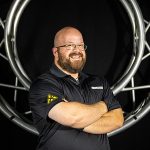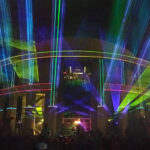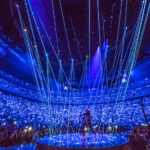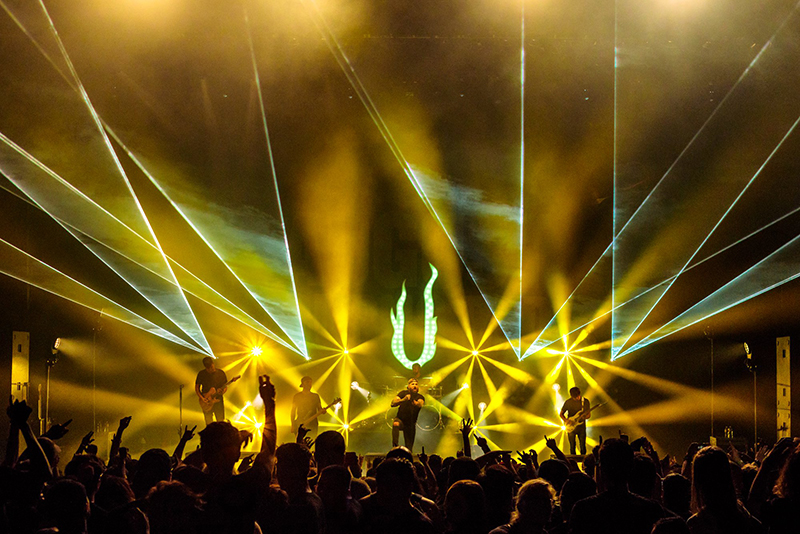
X-Laser and Squeek Lights Team Up to Bring Lasers and Education to the New York Region
Companies tend to pick up steam when the industry sees promise in their work or products. For companies who have been around forever in this business, they learned how to continually deliver promise in the market, whether it be in lighting products, lighting design or lighting production. Laser company X-Laser is one of those companies steadily growing on its products’ promise and dedication to the people of the industry; its CEO Adam Raugh is a guy so excited about spreading lasers into markets previously foreign to lasers that people have called him “the Lazarus of lasers for lighting people.”
It is your promise and merit that gets you a title like that. Companies that stick around are companies that continue to be attentive to their company’s needs.
“Look, it’s only been a few years really since I took over here at X-Laser,” says Raugh with excitement in his voice, “and in that time we have adapted our thinking forward to be focused directly on helping our customers grow with their lasers. We make lasers so that lighting designers can incorporate one of the most visually stunning deliveries of light into their show as an element to be incorporated instead of something to work around.”
X-Laser’s products have been hitting the market with a reputation for being extremely easy for programmers and lighting designers to use with the ease of a moving head — comments about X-Laser “fixtures” normally begin with phrases like, “Well, it didn’t take long…” Production company Squeek Lights and its chief, Victor Zeiser, just purchased five of X-Laser’s Skywriter HPX M-5 units for the latest August Burns Red tour. “Here’s the thing,” Zeiser says right off the bat, “Adam [Raugh] makes lasers for lighting people. It wasn’t four hours into the programming for the August Burns Red tour and the LD had already been able to incorporate the X-Laser fixtures into the rig, and not just having cues with his show, but using them like any other light fixture in the rig.”
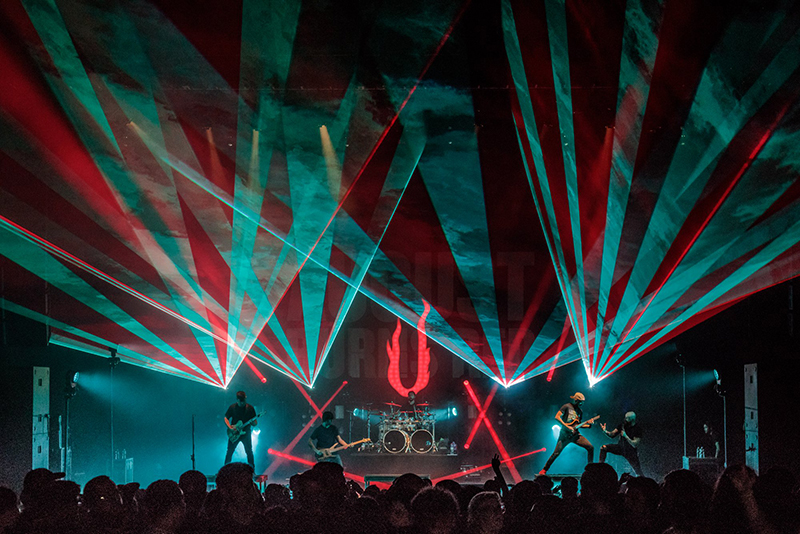
The Laser Projectors
X-Laser’s Skywriter HPX M-5 is one of the more powerful offerings in their Skywriter line. This model uses a 5W RGB laser engine slamming photons into the air in any color you need. X-Laser packed very high-quality scanners into the HPX M-5, industry standard 30K PPS scanners to give ridiculously high-quality laser graphics and smooth effects. For lighting people, PPS means points per second. This refers to the refresh rate, where the laser industry standard for high quality is about 30,000 points per second. The X-Laser projectors are designed and conceived so that it appears to the lighting designer from the console as just another fixture in the rig — albeit with a visually distinct, powerful effect — and console operators can utilize the hundreds of pre-configured gobos, prisms, color macros, and motion macros. You can also just build your own effects using the detailed individual parameter control you have over every parameter of that laser, just like a moving light.
“Where we’ve come from is a pretty quick story, but it’s important to know how we got here,” says Raugh. Raugh’s team at X-Laser are industry veterans. “Back in the day, there were laser shows, but there were not laser and lighting shows — it was light shows that had lasers in them. Your laser show guy shows up with his kit, gets set up, and he runs his 100 or so pre-programmed effects along with your show, whether or not it went along with what you might have wanted for your show. This isn’t to say that everyone running laser shows operated like this, but many lighting designers have had this experience. What we aim to do is to make light in its laser state just as easy to use and make art with as every other lighting device out there available to designers. The people who make up the laser world are the important sample group, and that is who we serve. What we want for the industry are accessible laser products that don’t require a different kind of thinking.”
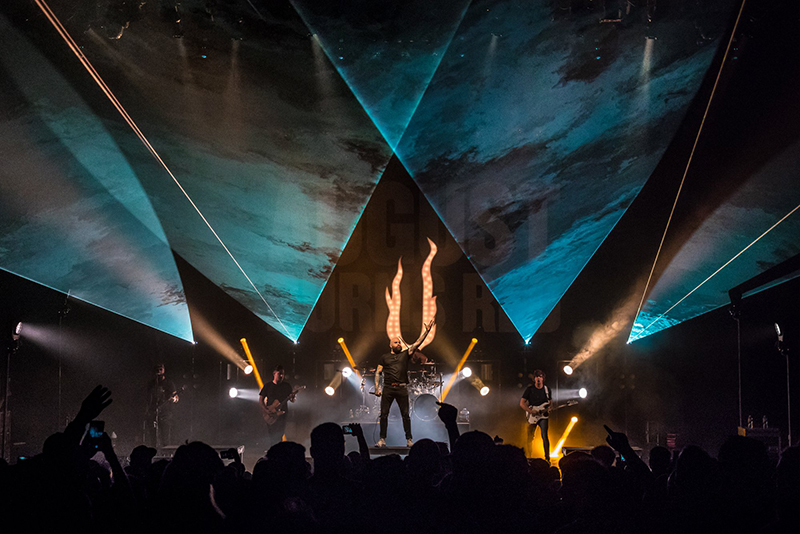
Console-Agnostic By Design
“The X-Laser gear makes it super simple to get down to business,” says Zeiser. “People are console specific; X-Laser projectors are console agnostic. It doesn’t matter what you’re running, we all have our preference, but it’s just DMX, Art-Net, or streaming CAN, and you’re up and programming. Hog, MA, Avo, ChamSys, X-Laser’s just a fixture for all of them. But you have the access to the parameters in a very mindful way that piques lighting designers like they’re used to, and that will be paramount to more laser usage in our business.”
It’s worth mentioning that Squeek Lights is another company that is delivering promise in its product, which is production, and specifically touring productions. Victor and his team have been growing like wildfire since he started Squeek Lights a few years ago, prompting yet another expansion in his operations up and coming.
Very recently, these two growing companies, X-Laser and Squeek Lights, figured out that an opportunity existed for a collaboration, all based around getting more easily operated lasers into the hands of designers. “We were putting out the August Burns Red tour, and there was a concept for lasers being used in the rig,” Zeiser says. “X-Laser products had been on the radar for a while, and we as a company had been back and forth on putting lasers in the inventory before this tour. This opportunity, and the absolutely incredible service shown by Adam and the X-Laser folks has been such an incredible decision.”

FDA Requirements and Education
Using lasers in a design comes with a few caveats, most of which are simple events of filling out and filing some paperwork with the laser governing body of the USA, which happens to be the Food and Drug Administration. This is due in part because lasers and the medical industry work closely together in regulation. To shine laser light near people in entertainment, the FDA requires users to obtain what’s called a Variance, and it’s ostensibly a permission to use your laser in your show, granted you do it safely. X-Laser assists you heavily in getting your variance, and they make that process very simple for you, the end user. They’re known for making the variance process very painless.
The government does makes some things you have to do in states like New York pretty costly, like having a designated Laser Safety Officer (LSO) onsite during your usage of the laser equipment. “LSOs are hit or miss,” says Zeiser. “It’s usually somewhere around a thousand bucks for the LSO for the day, and most of the time you are paying for someone to babysit the venue and not help you out at all. We want something different than that for the business. We teamed up with Adam and X-Laser to all become licensed Laser Safety Officers for our region, and what this will give us is not only the ability to work laser safety across the region, but also to be helpful and useful for people who have to by law have a laser safety officer.”
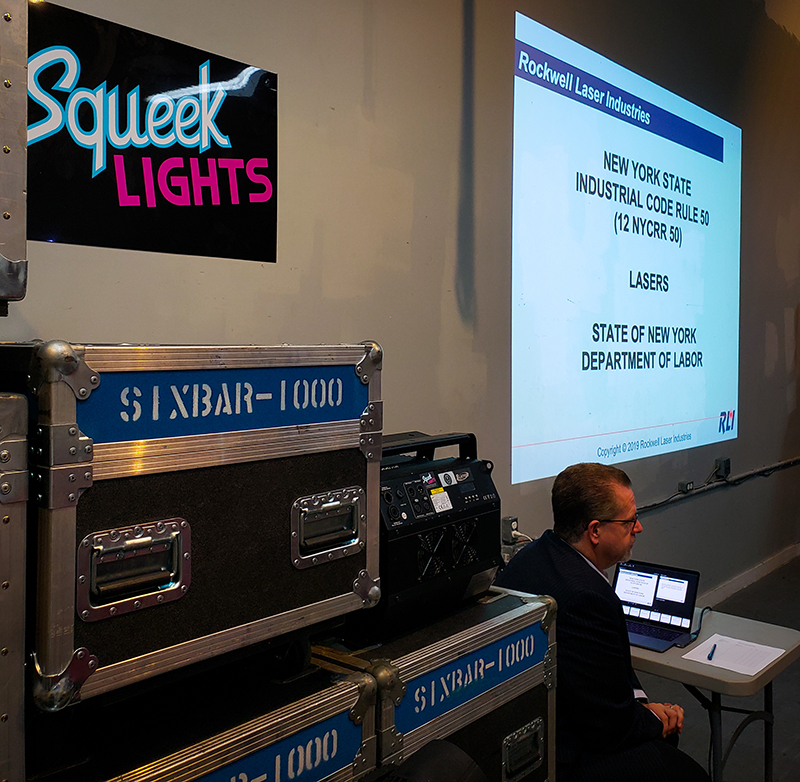
X-Laser is quite excited about the momentum that is growing around laser education. “We worked together with Victor and his team to bring them up to speed to pass the state licensing exam, and this brought on the drive to educate people as a function of industrial growth.” Raugh says, with a motivation in his voice that grew steadily during the conversation. “We’re a company of laser people for lighting people.”
As people re-discover the laser as an integral part of lighting design across the industry, it’s going to be interesting to see how the industry adapts to make this happen. I expect to see people like Adam and Victor up at the front of the line, standing up for the people who want to explore lasers like they did Sharpys and Mac Vipers — a normal part of every day design in the industry.
For more information, visit www.x-laser.com and www.squeeklights.com
